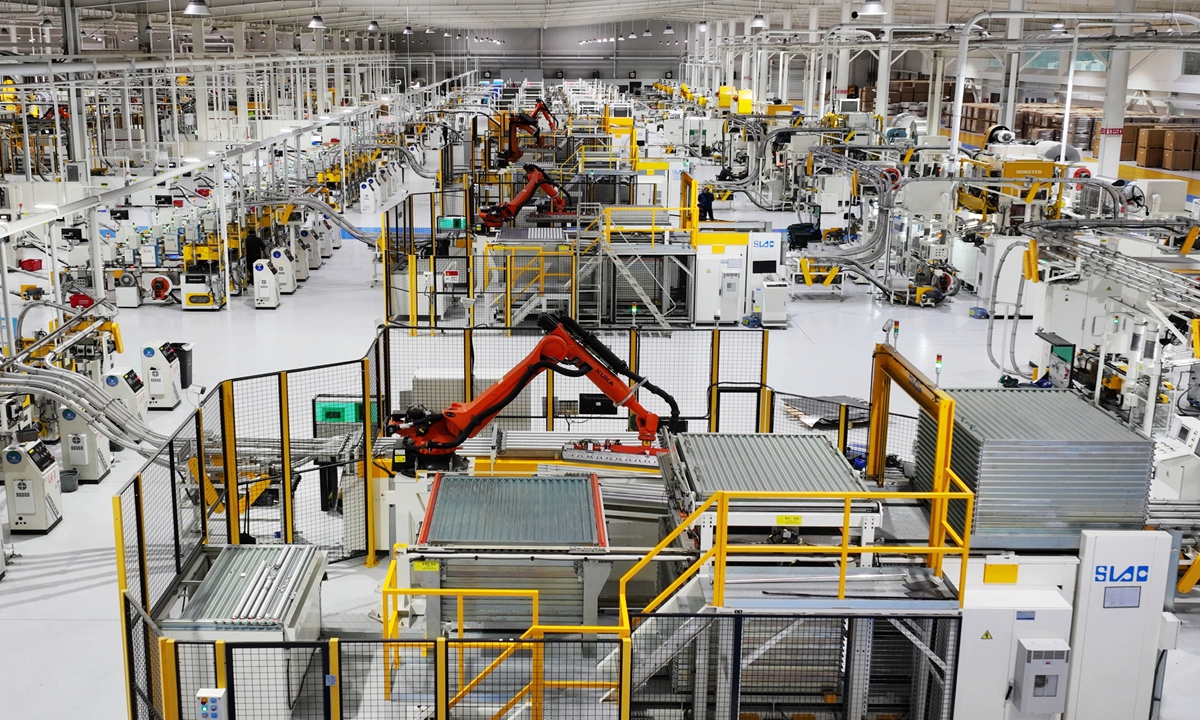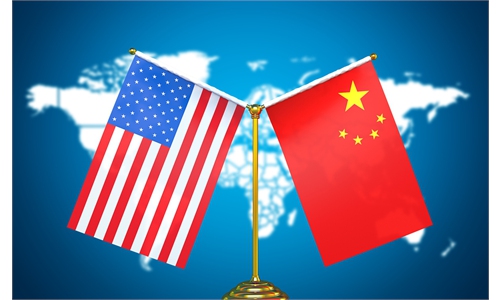
Industrial robots are operating on an intelligent production line in a smart manufacturing enterprise in Yangzhou, East China's Jiangsu Province. Photo: VCG
Despite the uncertainties caused by climate change, geopolitical conflicts and supply chain restructuring that hit the world economy in 2023, the complex and volatile political and economic situation hasn't shaken the bullishness of Chinese companies, largely due to the growth potential of Chinese manufacturing.Chinese companies are more optimistic about the world economic situation and outlook in 2024 compared with their peers in Japan and South Korea, according to a survey conducted among senior executives in the three countries by the Global Times Research Center, the Maeil Business Newspaper and the Nikkei in December 2023.
About 67 percent of Chinese respondents said that the world economy would grow in 2024, with 46 percent of Japanese respondents and 34 percent of South Korean representatives holding the same view.
With the world economic recovery still facing so many risks and challenges, why do Chinese companies remain optimistic?
Just look at the performance of Chinese manufacturing in the global markets over the past year, and it's easy to see that the bullishness actually points to confidence in Chinese companies' ability to see further development in the world arena.
Amid changing international trade patterns and a new round of technological revolution, going global has become a natural choice of many on China's industry chains.
Many Chinese companies are at a crucial stage of expanding and investing in overseas markets. Their global aspirations derive from the competitiveness of their products and the potential of market development.
Last year was a milestone for a new group of Chinese hot-selling products in overseas markets, with tech-intensive items such as electric vehicles, lithium batteries and solar batteries leading the way in exports, with exponential growth.
In 2023, exports of China's new tech-intensive green trio - solar batteries, lithium-ion batteries and electric vehicles - surged 29.9 percent to 1.06 trillion yuan ($149 billion), according to the General Administration of Customs.
The robust performance shows the global market's recognition of the technological progress of Chinese manufacturing, as well as the competitive advantages of Chinese companies when facing rivals from developed economies.
Despite efforts by the US and Europe to reduce their dependence on Chinese products, there is no sign that China's share in global supply and industry chains will shrink in the coming decade.
The strengths of China's manufacturing sector include comprehensive industry chains, mass production capacity and a colossal market.
Technological innovation has kept Chinese manufacturing growing. China has made significant investments in research and development, promoting the upgrading of traditional industries and expanding into high-value manufacturing. This process has greatly improved productivity, quality control and innovation for Chinese companies.
As we see in many traditional sectors, Chinese manufacturing is catching up with the global advanced level. In some emerging sectors, Chinese companies even stand out as industry leaders.
The global economic growth pattern is undergoing dramatic changes and offering new market opportunities. Emerging markets and developing countries with large populations, abundant resources and vast markets offer tremendous potential for world economic development. In particular, regions like the Middle East and South America will become important engines for global economic growth.
As the potential of these markets is gradually unleashed, China is strengthening cooperation with them. For instance, new energy cooperation between China and the Middle East is showing great vitality amid the region's energy transformation push.
Thus, despite the prospect of more intense competition and the headwinds of protectionism in the US and Europe, Chinese companies remain confident of maintaining and making full use of their advantages.



